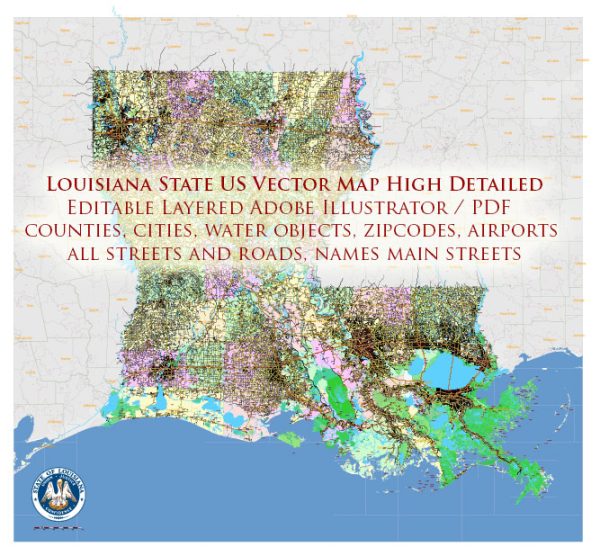Louisiana has a rich history of urban development that reflects its diverse cultural influences, economic activities, and geographic features. The state’s major cities, including New Orleans, Baton Rouge, Shreveport, and others, have played crucial roles in shaping its urban landscape. Here is a brief overview of the urban development history in Louisiana:
- New Orleans:
- Colonial Influence: Founded by the French in 1718, New Orleans became a major port city due to its strategic location along the Mississippi River and the Gulf of Mexico.
- Cultural Diversity: The city’s unique cultural blend includes French, Spanish, African, and Creole influences, evident in its architecture, cuisine, and traditions.
- Antebellum Period: New Orleans prospered during the antebellum period due to the cotton trade and its status as a major slave market. The city’s French Quarter, with its historic architecture, dates back to this time.
- Industrialization and Decline: The industrialization of the 19th century brought railroads and further economic development, but New Orleans faced challenges, including the Civil War and the decline of the plantation economy.
- Baton Rouge:
- Early Settlement: Originally settled by the French in the 18th century, Baton Rouge became a key military and trading post.
- State Capital: Designated as the capital of Louisiana in 1849, Baton Rouge’s development was influenced by its role as the seat of government.
- Shreveport:
- Riverport City: Shreveport’s development is closely tied to its location along the Red River, which made it a prominent riverport and trading center.
- Transportation Hub: The city thrived as a transportation hub with the advent of steamboats and later the development of railroads.
- Other Cities:
- Lafayette: This city in the southwestern part of the state developed as an agricultural center and later became an important hub for the oil and gas industry.
- Lake Charles: With its proximity to the Gulf of Mexico, Lake Charles developed as a center for the petrochemical industry.
- Hurricane Impact:
- The urban development of many Louisiana cities, especially New Orleans, has been shaped by the impact of hurricanes. Events like Hurricane Katrina in 2005 highlighted the vulnerabilities of urban infrastructure and prompted efforts to improve disaster resilience.
- Modern Challenges and Developments:
- Urban development in Louisiana faces challenges such as coastal erosion, subsidence, and the impact of climate change. Efforts are underway to address these issues and promote sustainable development.
Overall, Louisiana’s urban development history is a tapestry woven with the threads of its diverse cultures, economic activities, and responses to environmental challenges. The state’s cities continue to evolve, blending history with modern influences to create vibrant urban landscapes.


 Author: Kirill Shrayber, Ph.D.
Author: Kirill Shrayber, Ph.D.